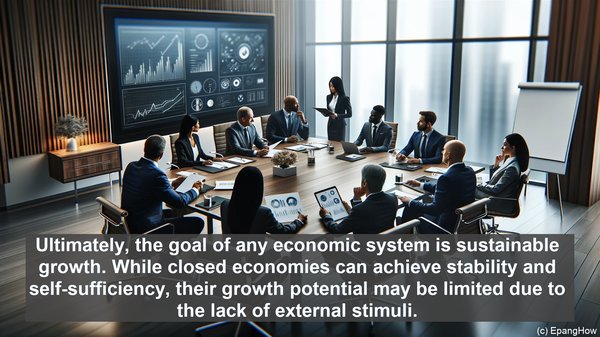Introduction: The Two Sides of the Economic Coin
Hello everyone! When it comes to understanding the dynamics of global economies, one of the fundamental distinctions we encounter is that between closed and open economies. These two systems, while sharing certain similarities, have significant differences that shape their functioning. Today, we’ll explore these distinctions and gain insights into the implications they have on various economic aspects.
Closed Economy: The Self-Sufficient Realm
Let’s begin with the closed economy. As the name suggests, this system is relatively self-sufficient, with limited or no trade interactions with other nations. In a closed economy, the focus is primarily on domestic production and consumption. The government often plays a significant role in regulating economic activities, and there may be restrictions on imports and exports. This approach aims to protect domestic industries, promote local businesses, and ensure stability within the national economy.
Open Economy: The Global Network
Contrastingly, an open economy is characterized by extensive trade and financial interactions with other nations. In this system, there are minimal barriers to the movement of goods, services, and capital across borders. An open economy encourages foreign investments, promotes export-oriented industries, and fosters competition on a global scale. It thrives on the principle of comparative advantage, where countries specialize in producing goods or services they are relatively more efficient at, leading to enhanced efficiency and overall economic growth.
Trade: The Cross-Border Exchange
One of the most apparent distinctions between closed and open economies lies in their approach to trade. In a closed economy, due to limited or no trade, the availability of foreign goods may be restricted, and the choices for consumers may be relatively limited. On the other hand, an open economy provides a wide array of choices, as it allows the inflow of goods and services from various countries. This not only expands consumer options but also exposes domestic industries to international competition, which can drive innovation and efficiency.

Investments: Domestic vs Foreign
Another crucial aspect is investments. In a closed economy, the focus is primarily on domestic investments, with limited exposure to foreign capital. This can have both advantages and disadvantages. On one hand, it ensures that the country’s resources are directed towards its own development. However, it may also limit access to external funding and expertise. In contrast, an open economy attracts foreign investments, which can inject capital, technology, and knowledge, stimulating economic growth. It also offers opportunities for domestic businesses to expand globally.

Economic Growth: The Big Picture
Ultimately, the goal of any economic system is sustainable growth. While closed economies can achieve stability and self-sufficiency, their growth potential may be limited due to the lack of external stimuli. Open economies, on the other hand, have the advantage of being part of a global network, where ideas, innovations, and resources flow freely. This interconnectedness often translates into higher growth rates, as countries can leverage the collective knowledge and opportunities available globally.
